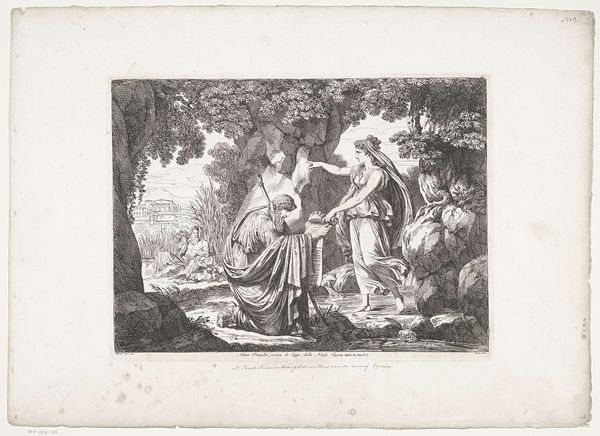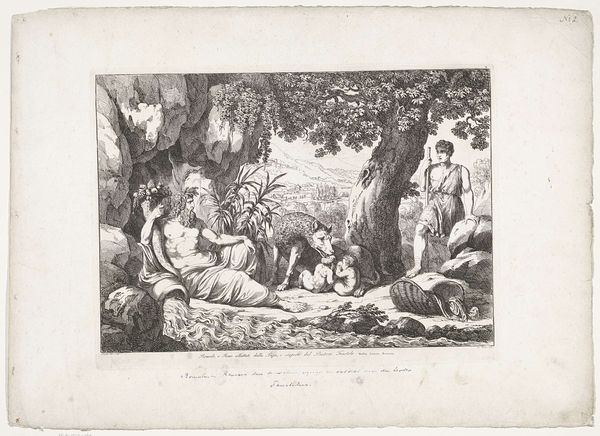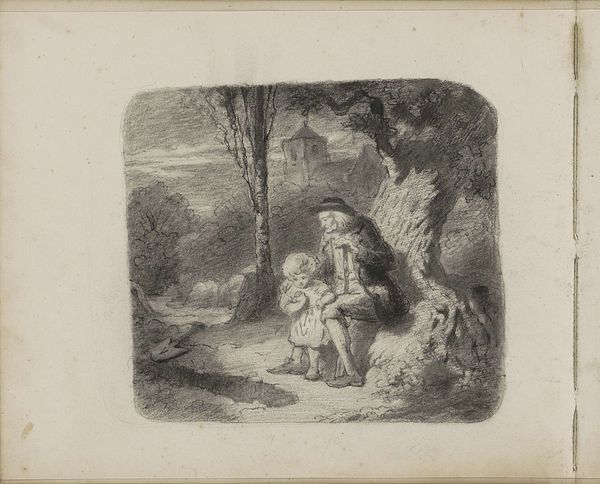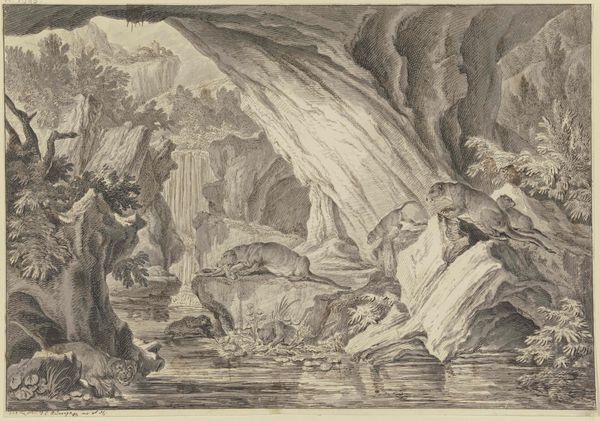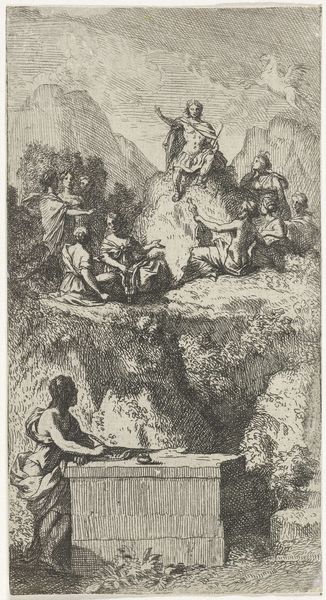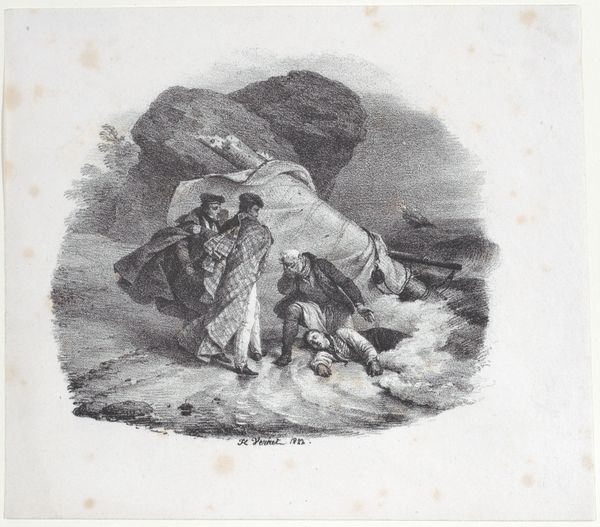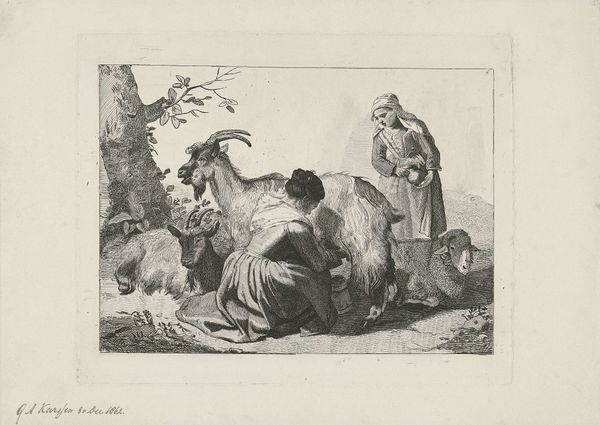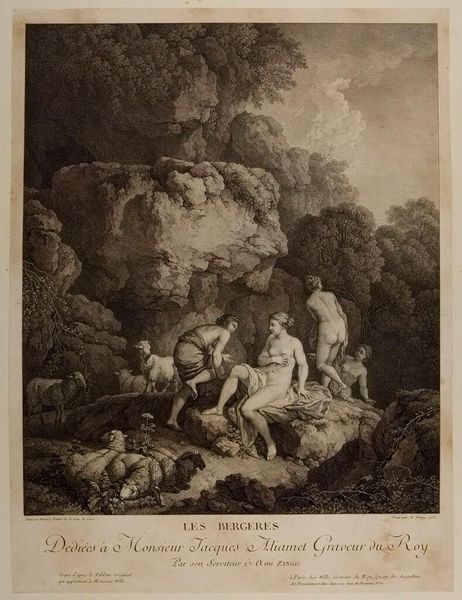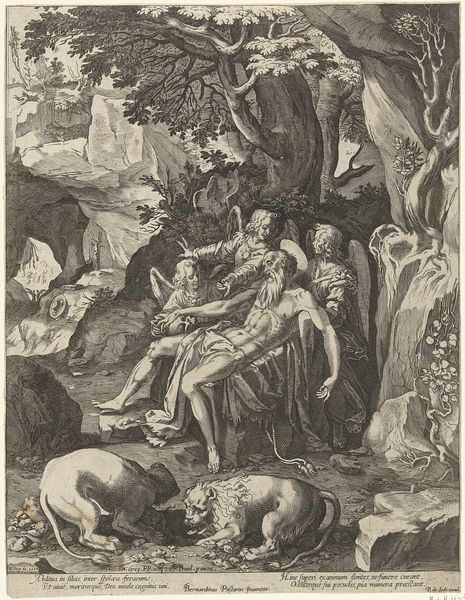
print, engraving
#
ink drawing
#
baroque
# print
#
pen sketch
#
landscape
#
figuration
#
history-painting
#
engraving
Dimensions: height 118 mm, width 170 mm, height 108 mm, width 169 mm, height 379 mm, width 243 mm
Copyright: Rijks Museum: Open Domain
Editor: Here we have "Lot and his Daughters and Hagar and Ishmael in the Desert," an ink drawing by Bernard Picart, created sometime between 1683 and 1733. I find the stark contrast of light and shadow quite compelling. What historical narratives might be embedded within this print? Curator: This print offers a fascinating intersection of biblical narratives, each loaded with socio-political implications regarding gender, power, and survival. The depiction of Lot and his daughters is, of course, ethically fraught, raising questions about consent, patriarchal control, and the desperate measures taken in the aftermath of societal collapse. Hagar and Ishmael, on the other hand, represent a story of expulsion and marginalization, mirroring the experiences of many displaced and racialized peoples throughout history. Editor: I see what you mean. It’s not just a quaint depiction of biblical stories but a commentary on societal power structures. How does the artist’s choice to combine these stories complicate or reinforce those themes? Curator: By juxtaposing these narratives, Picart invites us to consider the varied experiences of women within patriarchal systems and the precarity of existence for those deemed ‘outsiders’. Note how the figures are rendered. Lot is often presented as passive, his daughters proactive, albeit problematically so. Hagar's resilience in the face of abandonment speaks volumes. Can we not draw parallels between Hagar's expulsion and contemporary experiences of forced migration and displacement? Editor: That’s a really powerful connection. It forces us to consider the contemporary relevance of these narratives. Is it right to frame this piece as feminist? Curator: While we must be cautious about retroactively applying contemporary labels, analyzing the representation of women, power dynamics, and societal marginalization through a feminist lens certainly offers valuable insights into Picart's work and the complex social tapestry it reflects. Ultimately, engaging with the piece provokes thoughtful discourse on shared historical experiences. Editor: Thank you. It really gave me a deeper appreciation for how artworks are never really separate from their historical and social contexts. Curator: Precisely! By considering historical power imbalances and individual stories, we see its relevance today.
Comments
No comments
Be the first to comment and join the conversation on the ultimate creative platform.
